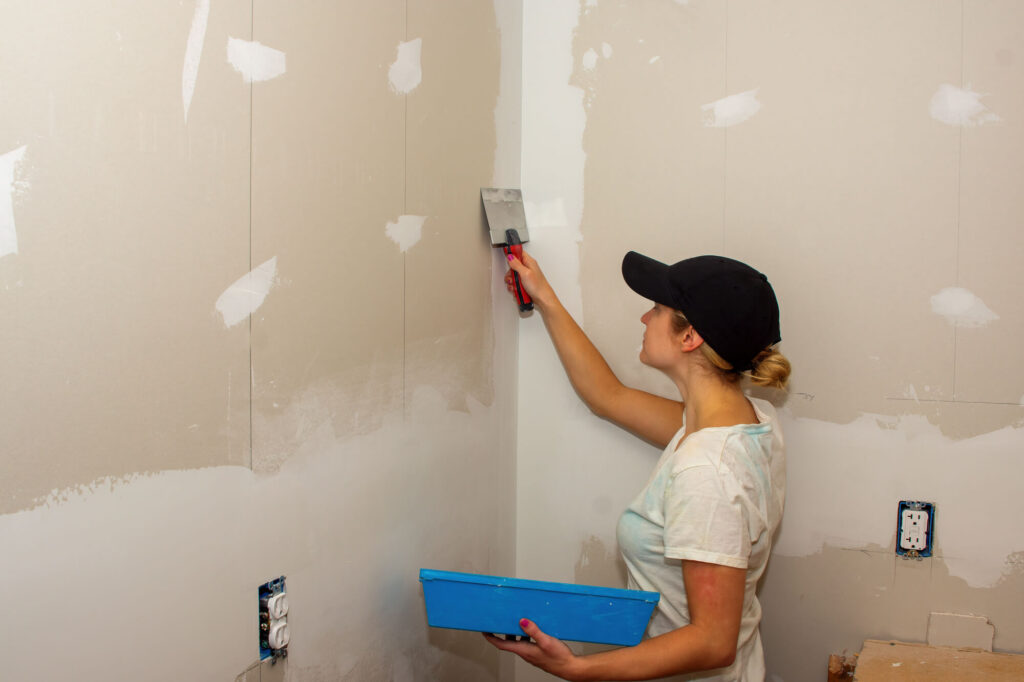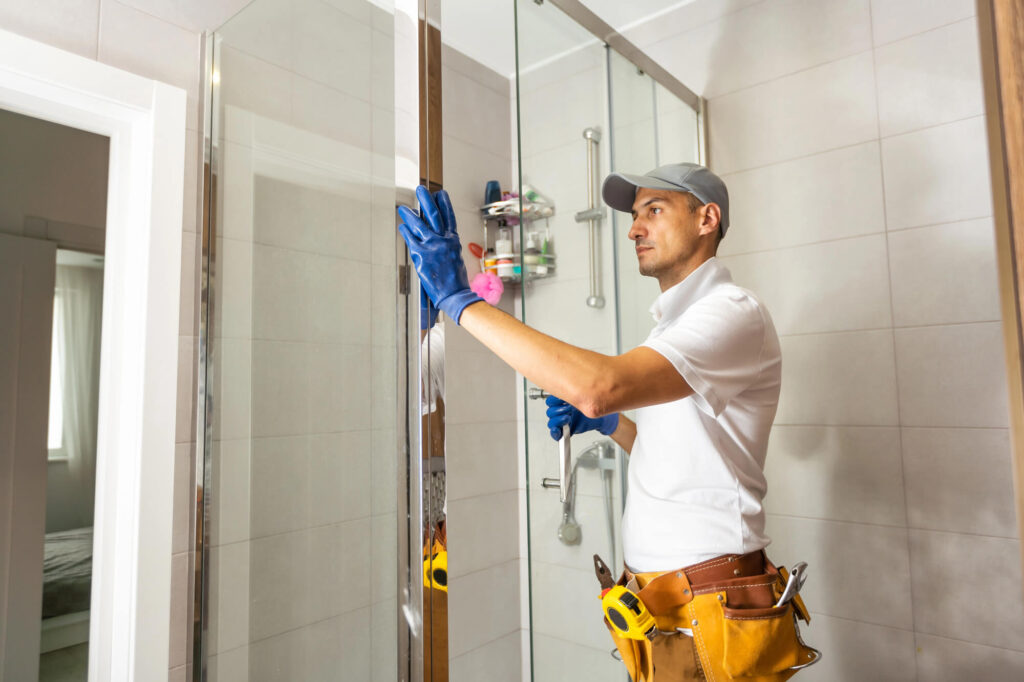Embarking on a bathroom remodeling project can dramatically enhance your home’s value, functionality, and overall comfort. However, bathroom renovations often come with a range of expenses that can quickly spiral out of control without careful planning. Setting a realistic budget right from the start is crucial for keeping costs manageable and ensuring your bathroom remodel dreams don’t turn into financial nightmares.
Careful planning and realistic bathroom remodel budgeting are foundational elements for any successful bathroom remodel, although there are also other hacks and strategies to keep costs down. Whether updating a small powder room remodel or undertaking a complete primary bathroom remodel, adequate preparation will ensure your project stays on track financially and aesthetically.
Factors Influencing the Cost of a Bathroom Remodel
When setting your budget, it’s essential to recognize the main factors that influence bathroom remodeling costs. Being aware of these elements can help you plan more accurately and prioritize your expenditures.
Square Footage and Bathroom Layout
Your bathroom’s size directly impacts remodeling expenses, with costs typically calculated per square foot. Larger bathroom spaces require more materials, fixtures, and higher labor costs. Additionally, complex layouts involving structural changes, such as removing load-bearing walls or significantly altering the plumbing layout, can dramatically increase your budget.
Choice of Materials (Tiles, Fixtures, Cabinetry)
Materials are among the most significant contributors to the cost of bathroom remodels. High-end materials like marble countertops and natural stone tiles significantly raise overall expenses compared to budget-friendly alternatives like ceramic floor tile and laminate countertops. Your selection of bathroom cabinetry, sinks, bathtubs, showers, and other fixtures will also heavily influence total remodeling costs.
Plumbing and Electrical Changes
Changing your bathroom’s plumbing and electrical wiring can add substantial costs. Relocating plumbing fixtures such as toilets, bathtubs, or sinks requires significant labor and materials, while electrical upgrades like installing new LED lighting or adding electrical outlets typically involve professional electricians, contributing to higher labor prices.
Labor Costs and Regional Pricing Variations
Labor costs vary considerably depending on your region. Urban areas generally have higher labor costs compared to suburban or rural locations. It’s important to research local pricing thoroughly and factor these variations into your remodeling budget. Hiring reputable Kitchen & Bathroom Remodeling Contractors ensures professional workmanship, potentially saving you money in the long run by avoiding costly mistakes and delays.Labor costs vary considerably depending on your region. Urban areas generally have higher labor costs compared to suburban or rural locations. It’s important to research local pricing thoroughly and factor these variations into your remodeling budget. Hiring reputable Kitchen & Bathroom Remodeling Contractors ensures professional workmanship, potentially saving you money in the long run by avoiding costly mistakes and delays.
Average Costs Breakdown
Understanding typical costs for specific bathroom components helps create an accurate and manageable budget:
- Bathtubs and showers: Custom showers or bathtub installations are pricier than prefabricated showers.
- Toilets and sinks: Mid-range bathroom remodel options often provide the best value.
- Flooring and tiles: Ceramic tiles offer affordability and durability; natural stone or marble tiles can substantially raise your remodeling costs.
- Lighting and fixtures: Affordable lighting fixtures and energy-efficient LED lighting options help control costs.
- Cabinetry and storage solutions: Ready-to-assemble cabinets offer savings compared to custom cabinetry.
Understanding these cost factors and their average pricing helps lay a solid foundation for your bathroom remodel budget.

DIY vs. Professional Bathroom Remodel
When planning your bathroom renovation, deciding whether to undertake a DIY remodel or hire professionals is critical. Each approach has its pros and cons, impacting the overall cost, quality, and timeline of your bathroom remodeling project.
Realities of DIY
DIY bathroom remodels can offer significant initial cost savings on labor expenses.
However, this approach requires considerable time investment and sufficient skills to manage complex tasks such as plumbing, tiling, and electrical work. Without adequate experience, DIY efforts can lead to costly mistakes, potentially resulting in higher expenses for repairs and corrections later.
Benefits of Hiring Professionals
Hiring professional bathroom renovation companies provides numerous advantages.
- Expertise and quality workmanship: Professional contractors ensure your remodel is done right the first time.
- Avoiding costly mistakes and rework: Minimize expensive repairs and unexpected expenses.
- Efficient project management: Save time, ensuring minimal disruption to your daily life.
Effective Strategies for Managing Your Bathroom Remodel Costs
Managing bathroom renovation costs involves strategic planning and savvy shopping. Here are several ways to maximize savings without sacrificing the quality and aesthetics of your bathroom remodel.
Shopping Smart for Materials and Fixtures
- Perform thorough price comparisons and research sales for affordable prices.
- Buy high-quality materials in bulk or during off-season sales.
- Explore online marketplaces for affordable alternatives for bathroom fixtures, affordable lighting fixtures, and replacement materials.
Repurposing Existing Bathroom Elements
Instead of fully replacing all bathroom elements, consider:
- Refinish existing bathroom cabinets instead of replacing them entirely.
- Reglaze your old tub, sinks, or shower tiles instead of purchasing new ones.
- Update smaller hardware like drawer pulls or a toilet paper holder instead of replacing entire bathroom features.
- See if a fresh coat of paint will be enough to remodel the walls while you set aside your budget for more important investments like a new bathroom vanity.
These smaller adjustments can significantly enhance your bathroom’s appearance and functionality while reducing overall remodeling costs.
Selecting Cost-Effective Alternatives Without Compromising Quality
Choose durable, budget-friendly materials like ceramic tile as a substitute for marble countertops. Opt for mid-range fixtures, such as affordable sink faucets, that offer reliability and strong warranties.
Balance practical elements and aesthetics within your budget.
Timing Your Remodel for Seasonal Discounts and Sales
Timing your remodeling project strategically can result in considerable savings. Plan renovations during contractors’ slower business periods when labor costs and rates may be lower, and take advantage of seasonal discounts and promotions to stretch your remodeling budget further.
Prioritizing Needs vs. Wants
Creating a well-balanced bathroom remodel budget involves distinguishing between essential upgrades and desirable enhancements. This distinction will help you maintain financial focus and avoid overspending on less critical items.
Identifying Essential Upgrades vs. Desirable Enhancements
Start by listing out absolutely necessary repairs, such as fixing broken bathtubs or light fixtures, updating outdated plumbing fixtures, or addressing any structural damage. These are foundational elements that must be addressed to ensure your bathroom is safe and functional.
On the other hand, luxury additions, like a double vanity or heated floors, are considered enhancements.
These features can elevate the comfort and luxury of your bathroom, but should only be included if your budget allows, after covering essential repairs. Perhaps a high-quality shower curtain will be enough for now instead of a new glass shower door.
How to Allocate Your Budget Effectively
Effective budgeting requires focusing spending on impactful improvements that both enhance your bathroom’s functionality and aesthetics.
Consider investing in modern fixtures or updated bathroom cabinetry, which can significantly improve your space’s usability and visual appeal more than any other upgrade can.
Strive to balance aesthetic upgrades with functional needs. Practical elements, such as efficient storage solutions or improved lighting, can dramatically improve your bathroom experience and should be prioritized over purely decorative items.
Tips on Maintaining Budget Flexibility
It’s crucial to build flexibility into your budget to handle unexpected expenses.
- Make a Cushion: Set aside funds for unforeseen expenses and ancillary tasks. Allocate 10–15% of your total bathroom renovation budget as a contingency. This cushion allows you to adjust for issues such as additional plumbing costs, extended labor timelines, or upgrades to ADA-compliant toilets or fixtures if needed.
- Ensure You Have the Time: Allocate additional time and financial flexibility for unexpected plumbing costs or installation delays.
Being financially and temporally prepared for surprises will ensure that your project stays on track without placing unnecessary strain on your overall budget.

Hidden Costs to Consider
While it’s easy to focus on big-ticket items like bathtubs, cabinetry, and countertops, hidden costs can sneak up and derail your bathroom remodel budget. Being prepared for these lesser-known expenses can protect your finances and keep your bathroom renovation on track.
Unexpected Plumbing and Electrical Issues
Behind-the-wall surprises are common during bathroom renovations. Aging pipes, corroded wiring, or outdated infrastructure can surface once demolition begins. These issues often require immediate and sometimes costly repairs. A thorough inspection before starting your bathroom remodel can help detect potential problems early and reduce additional plumbing costs or electrical upgrades.
Permit Fees and Compliance with Building Codes
Many homeowners overlook the costs associated with permits and building regulations. Depending on your location and the scope of work, like altering plumbing systems or installing new electrical lines, permits may be required. These fees can vary widely by region and type of remodeling project. Make sure your contractor understands local codes and includes this step in your bathroom installation setup.
Contingency Budget Recommendations
As mentioned before, to manage unforeseen expenses efficiently, include a contingency fund in your bathroom budgeting process. Experts recommend setting aside 10–15% of your overall budget for unexpected issues like water damage, structural repairs, or upgrades to modern fixtures. This financial buffer adds flexibility and peace of mind throughout the bathroom remodeling process.
Getting Started with Your Bathroom Remodel Budget
Effective budgeting for a bathroom remodel starts with thorough research and meticulous planning. Taking the time to create a comprehensive plan can save money and stress down the line.
Steps for Initial Research and FInal Cost Estimation
Begin by obtaining detailed quotes from reputable kitchen & bathroom remodeling contractors. This gives you a clear idea of labor costs and helps prevent surprises later.
Additionally, make use of online budgeting tools and calculators. These resources can help you break down expenses for materials, labor, and other necessities, providing an accurate estimation of total bathroom remodeling costs.
Be sure to research the average bathroom remodeling cost for your region and the type of remodel you’re undertaking, whether it’s a guest bathroom refresh or a full bathroom remodeling project.
Planning Timeline to Prevent Cost Overruns
Establishing a realistic timeline with adequate planning is crucial to keeping your project on track and minimizing unnecessary costs from additional time commitments.
Delays can lead to increased labor fees, installation costs, and other additional expenses. Plan tasks carefully, ensuring that labor prices remain within your expected budget range.
By coordinating the schedule efficiently and allowing ample time for each phase of the renovation, you can avoid rushed decisions and maintain control over your budget.
Plan Wisely and Save
A successful bathroom remodeling project begins with adequate planning, realistic budgeting, and an understanding of potential cost drivers. By carefully weighing your priorities, selecting cost-effective materials, and working with trusted professionals, you can transform your bathroom space without blowing your budget.
From a 5×5-foot powder room to a full primary bath remodel, the same principles apply: know what you need, plan for what you want, and prepare for the unexpected. Establishing a baseline for expenses, allowing a cushion for hidden costs, and sticking to a clear vision will help you achieve a beautiful, functional, and affordable bathroom update.
For expert advice, quality workmanship, and personalized service, contact AtoZ Bathroom Remodeling. Our experienced team is here to help you bring your vision to life at a reasonable price—no surprises, just results.
